| |
|
|
| |
 |
|
| |
Work continued through the winter to clear the six remaining stews at Longford. These will be used to take a tank-full of one year olds each, raised from the spawn we would hopefully collect in spring of 2009.
|
|
| |
 |
|
| |
|
|
| |
 |
|
| |
Following the disappointment of some of the sites we placed our boards in 2008, we decided on a serious rethink. Knowing the elemental requirements, we spent time establishing where we thought roach might spawn, ignoring all advice and suggestion. Where necessary we wrote to, and gained permission from, a number of land owners, almost all of whom were amazingly supportive and helpful, and set about placing the boards in readiness for the rising water temperature and lengthening days, which are the triggers for roach to spawn.
|
|
| |
 |
|
| |
|
|
| |
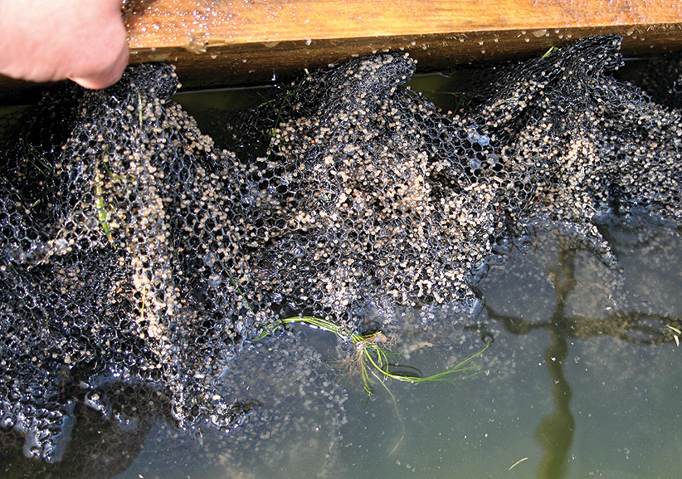 |
|
| |
It has astounded us how successful these boards are. Not only the fact that the roach choose them over the natural substrate, but that the eggs seem to stick more readily to the netting than the real fontinalis. Perhaps that’s why they are preferred, together with the density of the netting affording greater protection for the eggs, and the texture, along with the amorous cavorting males covered in tubercles possibly stimulating the release of eggs. Our new location strategy has been very well rewarded with 75% of our boards being spawned on in 2009. This was just 25% in 2008. This meant that we hadn’t wasted time placing, maintaining and retrieving ineffective boards. This time around we could take what we needed, replacing the ones we removed with fresh for the roach to continue spawning, and leave them to hatch and take their chances in the river.
|
|
| |
 |
|
| |
|
|
| |
 |
|
| |
With this knowledge and success came the idea that we could, at some point in the future, consider creating our own spawning sites, by temporarily manipulating flows in selected side streams at specific times of year, placing some of our spawning boards in just the right spot in this environment, having first introduced some of our three year old roach, then just leave them to get on with it. We could remove the spawning boards once the eggs have hatched, store them and replace them the following year. This idea has already been met with favourable responses from two quarters.
|
|
| |
 |
|
| |
|
|
| |
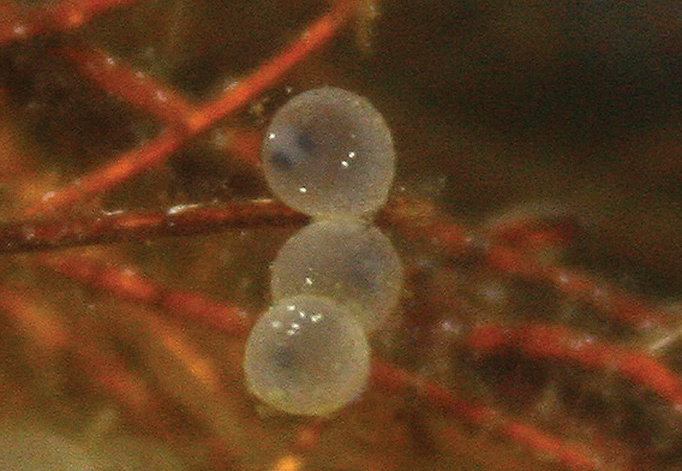 |
|
| |
Over the ten or twelve days it takes for the eggs to hatch we are privileged to be able to study their development, and within about a week the little fish are clearly visible inside the eggs and can be seen writhing and wriggling prior to emerging.
|
|
| |
 |
|
| |
|
|
| |
 |
|
| |
The sight of thousands of hatchlings in the tanks fills us with a million different emotions; satisfaction, pride, hope, fear and trepidation. The little larvae spend this first period attached by an adhesive gland on their head to the side of the tank, the spawning board or the netting. It is difficult to describe how minuscule and vulnerable they are, just tiny splinters of life.
|
|
| |
 |
|
| |
|
|
| |
 |
|
| |
At little more than one week old they are clearing the algae from the tanks, which we have ensured is there aplenty for them, along with a modest helping of brine shrimp each day. This not only gives them much needed protein, but also stimulates their hunting instinct. The brine shrimps can live up to five hours in the clean water of the tanks – not that they get the chance. They are usually all eaten within a matter of minutes. They will also be consuming any other microscopic critters they come across, including the new-born of the daphnia we seeded the tanks with.
|
|
| |
 |
|
| |
|
|
| |
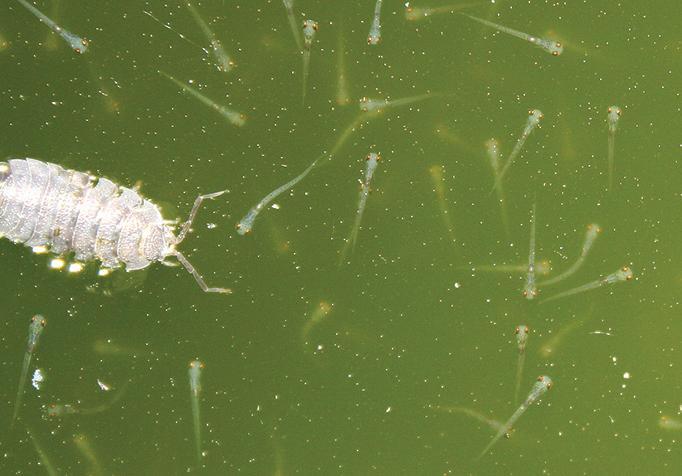 |
|
| |
To get these shots of one week olds we had to focus on something floating on the surface to prevent the camera’s autofocus from reflecting off the water, and in this case a hapless woodlice was the unlucky portrait sitter. It does, however, give a good indication of scale. We would like to stress that no animals were hurt or exploited in the making of this picture. The woodlice was rescued, and we named him Graham.
|
|
| |
 |
|
| |
|
|
| |
 |
|
| |
This picture of a heavily flooded middle Avon was taken before our hatchlings of 2008 had reached two weeks of age in the tanks, merely tiny splinters of life still. This is one element we will be protecting our roach from in the vulnerable early stages of their lives. The image also illustrates the importance of habitat restoration and enhancements schemes, and the need for fry and juvenile sanctuary areas along the river, something we are active supporters of. Goodness knows what toll the floods took on the wild hatchlings.
|
|
| |
 |
|
| |
|
|
| |
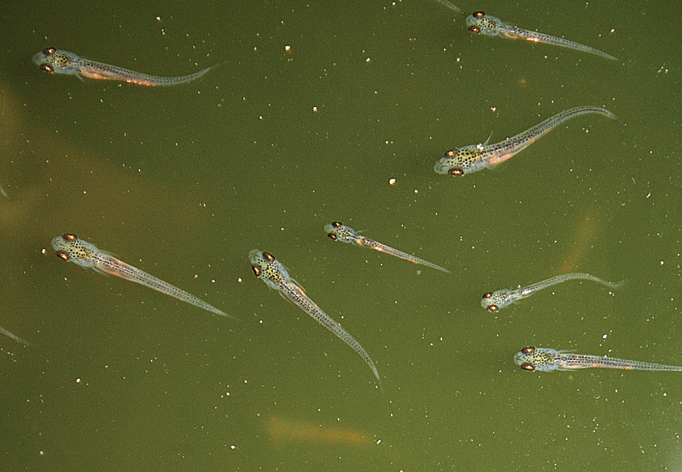 |
|
| |
At five weeks old the roach have started to fill out bodily and become much stronger moving through the water. It is amazing to see. Just a few weeks ago they were smaller than an earwig’s armpit, now they actively inspect every little particle as it passes, in case it is edible.
|
|
| |
 |
|
| |
|
|
| |
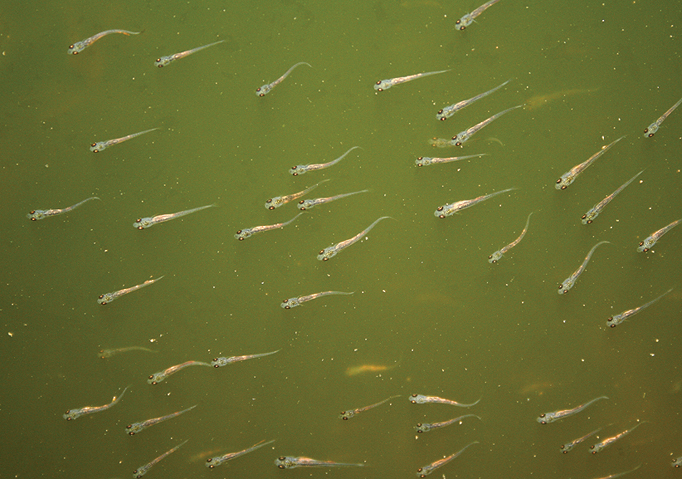 |
|
| |
One of the things that stimulates a good growth rate is the rich brine shrimp diet we ensure they get each day, and being still so small and relatively translucent, the last pink shrimp meal is clearly visible inside them. We never get tired of seeing this each day.
|
|
| |
 |
|
| |
|
|
| |
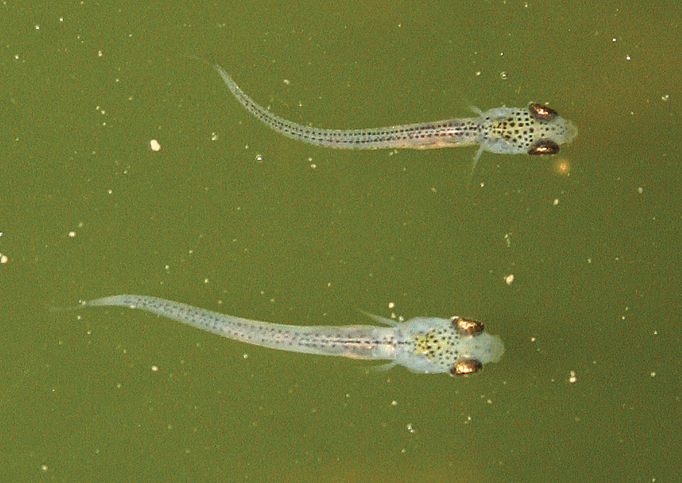 |
|
| |
Still at five weeks old, this is as close as we have managed to get.
Roach like you’ve never seen them before eh?
|
|
| |
 |
|
| |
|
|
| |
 |
|
| |
At seven and a half weeks they begin to look like proper little roach. We have now replaced the brine shrimp diet with a specially formulated crumb feed at the perfect size to suit the size of fish and with the optimum protein level to continue their healthy development. Daphnia young still supply them with the live food and they have now started to pull the legs of the adults.
|
|
| |
 |
|
| |
|
|
| |
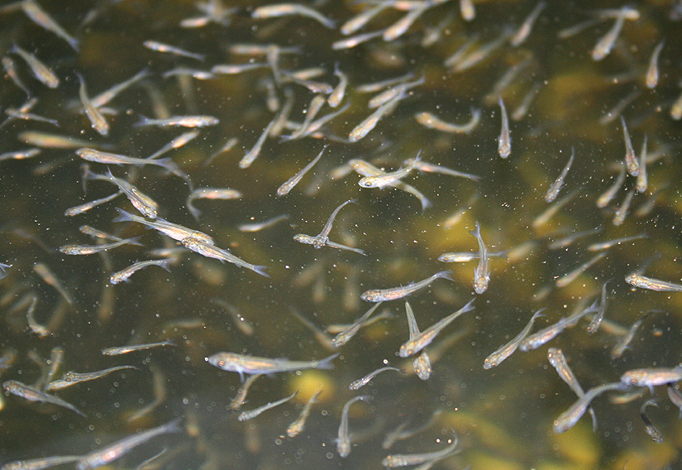 |
|
| |
The floating crumb particles are eagerly consumed by the little roach, and its colour means we still get the pleasure of seeing full pink bellies just after feeding.
|
|
| |
 |
|
| |
|
|
| |
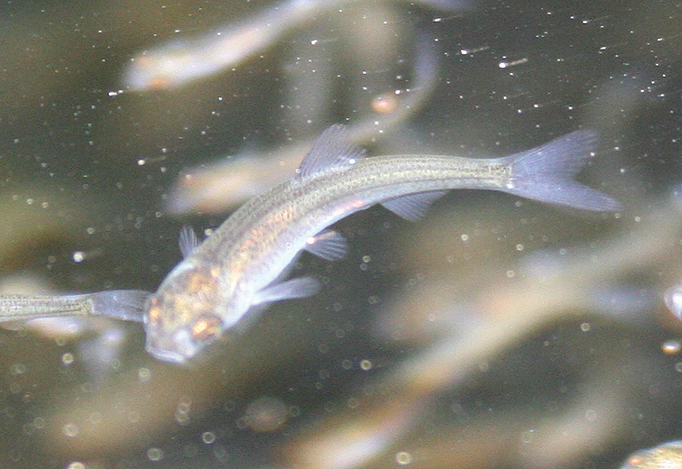 |
|
| |
This picture shows good fin and tail formation, in less than eight weeks, meaning the little roach would be far better at coping with environmental fluctuations such as variations in flow due to rain or weed cutting .
|
|
| |
 |
|
| |
|
|
| |
 |
|
| |
Last years’ babies, the 1+ mob or ‘toddlers’ as we call them, here in one of the middle tanks are doing extremely well and growing at an amazing rate. Happy, healthy and vibrant; it is simply a joy to be a part of. This picture shows them demolishing a helping of daphnia, cultivated in one of our feed tanks.
|
|
| |
 |
|
| |
|
|
| |
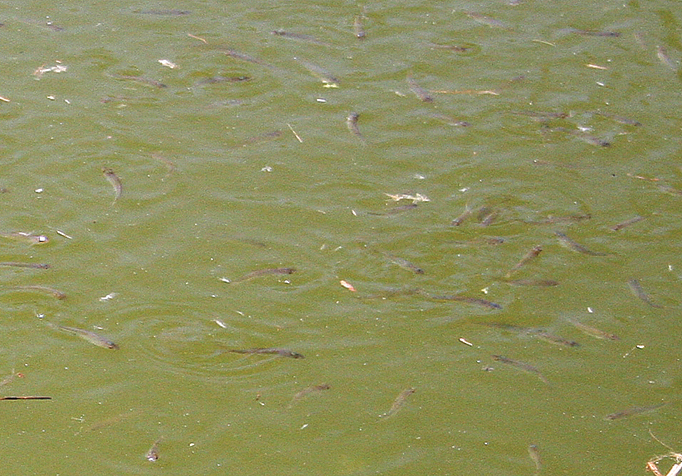 |
|
| |
The ‘toddlers’ are also doing fine in the stews. We visit them once or twice a week, and will continue to do so through the summer and autumn months to check everything is OK and feed them a supplementary helping of the crumb feed they have been raised on back in the tanks. This ensures they are getting enough food and reduces the risk of stock density problems, though this has been carefully considered.
|
|
| |
 |
|
| |
|
|
| |
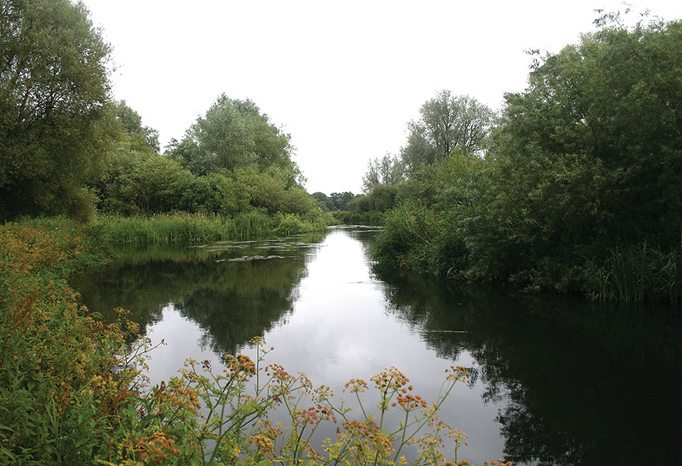 |
|
| |
And this is what it’s all about. The Hampshire Avon. Is it not unthinkable that once prime roach territory such as this may no longer offer future generations the same pleasure and life changing experiences it has those in the past? We think so.
|
|
| |
 |
|
| |
|
|
| |
 |
|
| |
|
|

